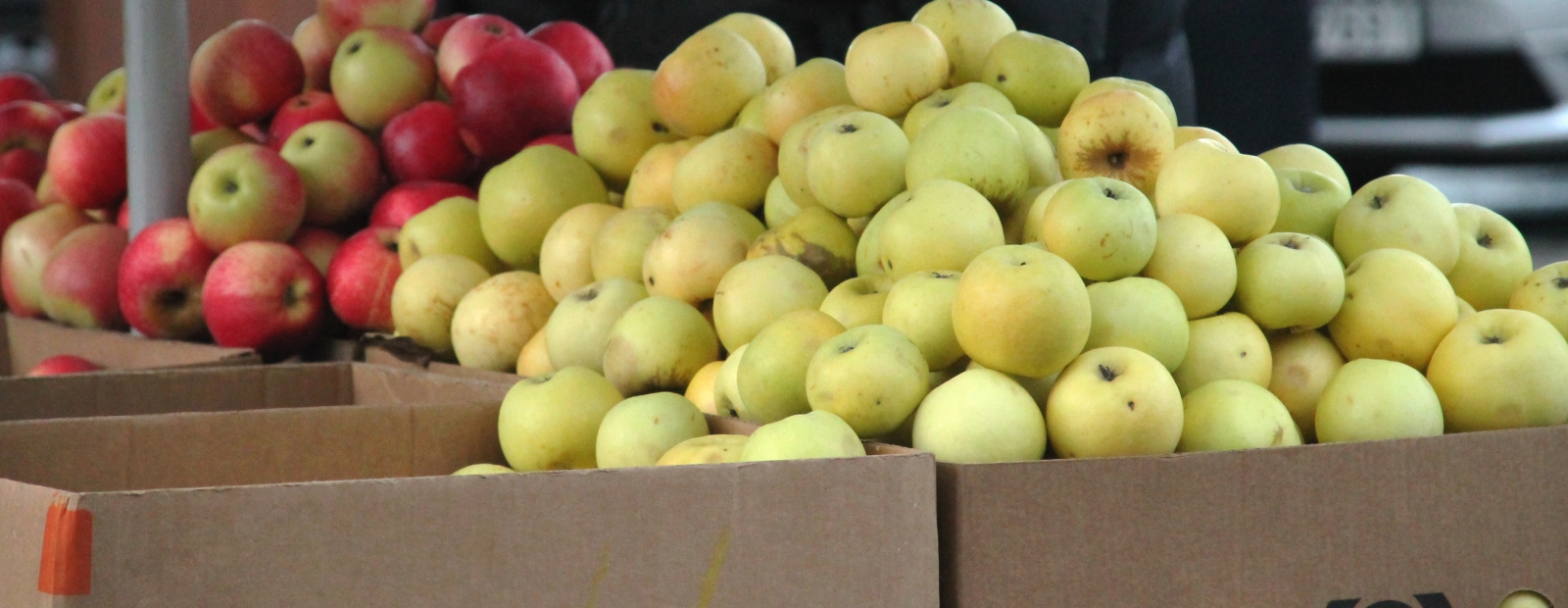According to the data of the Statistical Office, the amount of pesticides used for apples per hectare of plantations decreased from 1.28 kilograms (kg) in 2014 to 0.82 kg in 2019 or by 36%, the amount of pesticides used for cherries per hectare of plantations decreased from 1, 28 kg to 0.31 kg or by 76%, plums – from 0.83 kg to 0.30 kg or by 63%, pears – from 2.18 kg to 1.87 kg or by 14%, raspberries – from 0 , 44 kg to 0.16 kg or by 63%, but for strawberries – from 0.44 kg to 0.06 kg or by 86%.
The data also show that in 2019, 23% of plum areas, 25% raspberries, 30% apples, 31% cherries, 36% strawberries and 56% pear areas were treated with pesticides.
“The use of pesticides varies from year to year depending on the weather. In dry conditions, various pests, which are controlled by insecticides, develop more, and in wet ones, both disease and weed populations, which are controlled by fungicides and herbicides respectively. 2019 was relatively drier – especially spring and the first half of summer, therefore diseases developed less and fungicides were used little to control them, but in some fields it was not necessary to use them at all, “noted Vents Ezers, Director of the Plant Protection Department of the State Plant Protection Service.
The Statistical Office also mentioned that the amount of pesticides used per hectare of sown and planted areas in open field vegetable areas has increased for carrots, table beets and onions, but decreased for cabbage.
In 2019, the amount of pesticides used in one hectare of carrot sowings increased from 2.09 kg in 2014 to 3.34 kg in 2019 or by 60%, onions – from 3.03 kg to 3.49 kg or by 15%, respectively, but table beets – from 0.7 to 1.78 kg or 2.5 times.
The amount of pesticides used per hectare in cabbage plantations decreased from 1.01 kg in 2014 to 0.86 kg in 2019 or by 15%, but in potato plantations from 2.05 kg to 2.00 kg or by 2.4%, respectively.
In 2019, 87% of cabbage, 89% of onion plantations, 90% of carrots and beet crops were treated with pesticides, mainly herbicides to control weeds. Pesticides were used in 67% of potato plantations.
The increase in the amount of pesticides used per hectare of sown carrots in open field vegetables was influenced by the increase in the use of herbicides from 1.83 kg in 2014 to 3.1 kg in 2019 or by 69%, for beets – from 0.69 kg to 1.68 kg, respectively. or 2.4 times and onions – from 1.15 kg to 1.96 kg or by 70%.
“The increase in herbicide use can be explained by seasonal differences in different years as a result of changes in the range of herbicides used. Effective weed control in vegetable areas is a key condition for harvesting. “dry weather necessitated the application of herbicides after the germination of crops, such as prosulfocarb and metamitron preparations, the consumption of which was relatively higher per hectare,” explained Lake.
In 2019, fungicides were mostly used for apples and raspberries – 78% of the total amount of pesticides used for both apples and raspberries, pears 66%, cherries – 62%, strawberries – 77%, but potatoes – 84%.
Herbicides for weed control were the most widely used in table beet sowings – 94% of the total amount of pesticides used in table beet sowings, in carrot areas, respectively 93%, in cabbage plantations – 75%, and in onion plantations – 56%.
The Statistical Office also noted that last year insecticides were used very little – 21% of pears and 11% of the amount of pesticides used in cabbage plantations were insecticides.
The use of pesticides on crops is also affected by the use of pesticides containing heavier active substances. In 2019, three herbicide active substances – aclonifen, pendimethalin and prosulfocarb – accounted for 85% of all pesticides used in carrots to control weeds.
In table beet areas, 48% of the total amount of pesticides used was one herbicide active substance – metamitron, the use of which per hectare of beets increased from 0.93 kg in 2014 to 1.49 kg in 2019 or by 60%.
In onion areas, 87% of the total amount of pesticides used in onions consisted of the herbicide active ingredients aclonifen, pendimethalin and a fungicide, which provides plant protection against fungal diseases – mancozeb.
–


